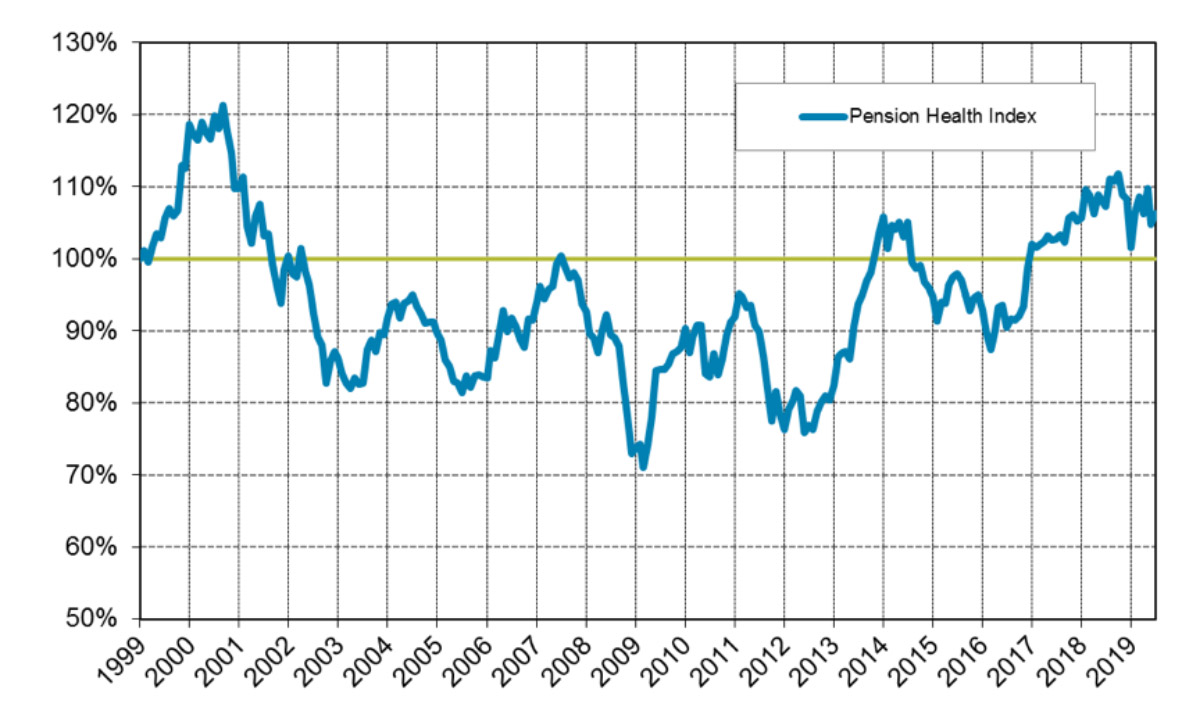But their solvency position has held steady in the second quarter thanks to strong equities

Low interest rates mean greater obligations for pension funds but there is now little chance of near-term relief from the current low rate environment.
According to a report from Mercer Canada, the solvency position of Canada’s defined benefit pension funds remains steady, with its Mercer Pension Health Index remaining at 106 as of June 30, 2019.
The index tracks the solvency ratio of a hypothetical plan and recovered in the first quarter from a reading of 102 at the start of the year and 95 at the end of 2018.
“Strong equity market performance has protected many otherwise exposed Canadian pension plans from a large swing in long-term interest rates in 2019,” said Andrew Whale, Principal in Mercer Canada’s Financial Strategy Group.
Liabilities for funds increased in the second quarter due to a drop of 20 basis points in long-term interest rates, exacerbating the 50-basis point drop for the year. The funded position of funds peaked in April before dropping back on the rate decline.
Despite the strong funded positions, Mercer says plan sponsors should re-evaluate their de-risking strategies.
“Over the last couple decades, many common factors have led defined benefit plan sponsors to take risk off the table, chief among them the decline in interest rates that directly increased pension obligations,” continued Whale. “Though recent funding legislation in Ontario and Quebec has tackled the other main issue of contribution volatility, plan obligations and the associated risk exposure still remain unsuitably large for many plan sponsors.”
What this all means for investment
From an investment point of view, a typical balanced pension portfolio would have risen by 3.2% during the second quarter of 2019.
Equity markets and Canadian bonds advanced, but at lower levels than the first quarter. The S&P/TSX Composite returned 2.6%.
Canadian fixed income markets rose over the quarter amidst lower yields, with long-term bonds (4.8%) significantly outperforming universe bonds (2.5%). Real return bonds (3.5%) also rose over the second quarter.
Global equities were led by Wall Street with a return of 4.3% in US dollar terms (2% CAD).
“The pace of global growth is expected to slow this year as unfolding trade tensions between the U.S. and China, as well as the announcement of tariffs on Mexico, weigh on market sentiment,” said Todd Nelson, Partner at Mercer Canada. “Signs of weaker global economic growth further added to volatility in the second quarter.”

Image credit and Source: Mercer



